Big Ten Basketball Storylines to Watch, Part 1

College basketball is almost here, so I’ll be taking a look around the Big Ten to size up Michigan’s competition.
Michigan State’s possible title contention
Sorry, I have to write this.
When Miles Bridges spurned the NBA last spring, the Spartans became the overwhelming favorite to win the conference, and plenty of pundits have them among the top tier of teams nationally. Last season, a very young and injury-depleted MSU squad sputtered to a mid-table finish that was capped by a blowout loss in the second round of the NCAA Tournament. This season, they look to be one of the best teams in the country on paper.
Everything starts with their terrific sophomore class, headlined by Bridges. It’s very apparent that he’s an NBA-level player – he almost definitely would have been a lottery pick in the last draft – and he’s a consensus preseason All-American and a trendy Player of the Year choice. His leaping ability is unparalleled at this level (as evidenced by the alarming frequency of his highlight-reel dunks); he has a great frame for a swingman and should be even stronger this season; he showed some ability as a dribble-drive threat; he shot 39% from three. Assuming that Bridges continues to develop as a pro prospect of his caliber should, he’ll be dominant and should be the best player in the league by a sizable margin.
Nick Ward and Cassius Winston only played about half of Michigan State’s minutes last season, but both are poised to step into larger roles this season. Even though Ward sometimes struggled with foul trouble, conditioning, and defensive awareness last season (as well as Tom Izzo’s impatience), he could be a dominant force: he ranked second nationally in offensive rebounding rate and free throw rate. The Zach Randolph comparisons are apt. Winston split time at the point with Tum Tum Nairn last season and will again, despite being a far superior offensive player – he was second nationally in assist rate. He had a propensity for turnovers and was a liability on defense, but he’s an elite distributor and should take a step forward assuming that he takes more of Tum Tum’s minutes.
Michigan State’s top two centers entering last season suffered injuries that would keep them sidelined for a year; Ward emerged as one of the better players in the Big Ten, so Gavin Schilling (a broad-shouldered foul machine) and Ben Carter (a UNLV transfer with glue guy attributes) will provide the frontcourt depth that the Spartans so sorely lacked. They also have the luxury of having the best incoming freshman in the Big Ten, Jaren Jackson Jr., a long-limbed forward who finished eighth nationally in the 2017 class according to the 247 Composite and should be a one-and-done candidate. Jackson’s a terrific rim protector and has some range on his jump shot (and has the luxury of being able to settle into a complementary role, a rarity for freshmen of his caliber); a front line of Bridges-Jackson-Ward is terrifying and it’s hard to imagine that many teams in the country (if any) will be stronger up front than the Spartans.
Izzo struggled to nail down a rotation last season, and may again this season, if only because he’ll have so much talent to work with in the frontcourt. Bridges will be a three at the next level, but thrived as a small-ball four last season; the personnel dictates that he’ll spend a majority of time as the three this season. Michigan State’s wing depth is shaky – former five star Josh Langford will start next to Winston, but Matt McQuaid seems to be the only scholarship backup on the wing – but that may be their only substantial weakness (their three-point shooting has been poor in exhibition games as well). They face a loaded Duke squad next week and will participate in Phil Knight’s mega-tournament later this month, so there will be some tough early tests; chances are they’ll be the Big Ten champs, a high seed, and a popular Final Four pick come March.
[More on teams you assuredly hate much less after the JUMP]
Minnesota and Northwestern on the upswing
Last season was a big step forward for both Minnesota and Northwestern, and with many of the key contributors returning, they’re garnering some Top 25 hype. Chances are that they’ll both make the NCAA Tournament, but it remains to be seen if they can vault into the top tier of the league.
In 2015-16, Richard Pitino’s Gophers hit rock bottom: they were one of the worst shooting teams in a power conference, won just two games after December, were beaten by a previously winless in conference Rutgers team by 23 in the regular season finale, and finished with a 8-23 record. Pitino brought in an influx of talent: swingman Amir Coffey came in as a highly-touted recruit and lived up to the billing, classmate Eric Curry was a solid role player, and imposing shot-blocker Reggie Lynch and their leader in made threes Akeem Springs transferred in from lower-level schools. A couple returning players improved noticeably as well. Nate Mason – who robbed Derrick Walton of a First-Team All-Big Ten selection – helped keep the offense afloat from the point guard position; Jordan Murphy is a rebounding menace as an undersized four; Dupree McBrayer was more efficient as a combo guard.
Led by Lynch, Minnesota finished with the best field goal defense and block rate in Big Ten play; they finished just inside the Top 25 nationally in adjusted defensive efficiency per Kenpom. Savvy scheduling, a 12-1 non-conference showing, and an undefeated February(!) earned the Gophers a five-seed in the NCAA Tournament, where they lost in the first round to Middle Tennessee State in a game where they gave up more than 1.2 points per possession. Springs was a grad transfer and is gone; Curry was lost in the summer after blowing out his knee; everyone else of note is back.
The formula will be similar this season: Pitino’s hoping that formidable rim protection will be enough to anchor an otherwise unremarkable defense and that Mason can almost singlehandedly prop up a decent offense. Coffey is one of relatively few Big Ten players with NBA potential and could have a breakout season as a sophomore. The backcourt was already crowded before the arrival of Top 100 freshman point guard Isaiah Washington, but he could figure into the rotation. Spacing and a lack of shooting and schematic creativity put a low ceiling on the offense; if Lynch is able to cut down on his fouling, Minnesota could ratchet up the defense and become an elite unit with Coffey and Murphy on the wing. A strong defense and a reliable point guard can get you a long way in college hoops.
Chris Collins and his vaunted Janitorial Internship Program has brought Northwestern to unprecedented heights: they reached the NCAA Tournament (and – stop me if you’ve already heard this a couple hundred times – it was their first appearance) and won 24 games, the most in program history by a decent margin. Despite faltering down the stretch after starting the season with a 18-4 record, the Fightin’ Janitors cobbled together a resume with enough quality wins to get them into the field comfortably as an eight-seed. They beat Vanderbilt in the first round before losing to eventual runner-up Gonzaga in a game that turned on a brutal refs-blow-an-obvious-goaltend-and-Collins-runs-onto-the-floor-during-play-and-draws-a-tech sequence.
They were a year ahead of schedule. Unfortunately they’ll be spending the season away from their usual home as Welsh-Ryan Arena undergoes extensive renovations, but their core is back and are now all upperclassmen. They do lose Sanjay Lumpkin: he played the third-most minutes on the team and was a great defender as a combo forward, but his usage rate was insanely low at 10.7% of possessions. Their eighth man – sharpshooting stretch big Nathan Taphorn – is gone as well. Much of their playing time figures to be soaked up by Aaron Falzon and Rapolas Ivanauskas, who were injured a year ago.
Four of five starters return: senior guards Bryant McIntosh and Scottie Lindsey, juniors Vic Law, a wing, and Dererk Pardon, a center. McIntosh is kind of in the same mold as Nate Mason: a great distributor who keeps the team turnover rate low, but not that efficient as a scorer (McIntosh is better inside the arc, Mason outside). Those two are probably the best two point guards in the Big Ten. Lindsey isn’t a great outside shooter either, though he led Northwestern in points per 40 minutes last season. Law, once the best recruit in program history, is a fantastic athlete and 3-and-D type. Pardon’s underrated – he finished in the Top 100 nationally in offensive rebounding rate, block rate, and 2-point % among qualified players.
Northwestern has a very similar profile to Minnesota: better on defense than offense, mostly because of strong field goal defense – and a low field goal percentage themselves. Both have star point guards, and the offense almost always runs through them, but neither scores efficiently, partially because they have to take tough shots. Three-point shooting is a team-wide issue for both. This may be too reductive, but I’d lean towards Northwestern being better than Minnesota, if only because I think more highly of Collins (at least in terms of his coaching acumen) than Pitino. Both programs are intriguing.
Purdue post-Swanigan
Last season, three Big Ten teams made it to the Sweet 16. Those three were the only teams in the Big Ten ranked in the Top 25 in Kenpom’s or Sagarin’s final rankings – and the three finished in the Top 25 in both. They were Purdue (the Big Ten regular season champs by two games), Michigan (the four wins in four days Big Ten Tournament champs), and Wisconsin (who knocked off the NCAA Tournament’s top overall seed). For what was somewhat of a down year in the conference, a trio of teams coalesced into a top tier by the end of the season.
I’ll cover Michigan and Wisconsin in the next installment. The difference between Purdue and those two teams is the level of attrition they’ve sustained over the offseason, as the Boilermakers will resemble last season’s team far more than Michigan or Wisconsin will. The Wolverines lost three of their top four players; the Badgers lost four of five starters; the Boilermakers lost their star – All-American big man Caleb Swanigan, the best player in the league – but return their next six leading scorers, including Isaac Haas, a player who fits in nicely as a replacement in the starting lineup for Swanigan.
Purdue has an interesting mix of players and should be a solid second behind Michigan State in the preseason prognostications. Their main rotation figures to be:
- PJ Thompson – a tiny nominal point guard (Purdue finished second nationally in assists per made field goals, but it was a collective effort) who was very high efficiency / very low usage.
- Carsen Edwards – a relentless attacking combo guard as a freshman, he had the most points per 40 minutes of any Purdue perimeter player, but was often reckless and was the least efficient Boilermaker.
- Dakota Mathias – led Purdue in three-point makes (72) and percentage (45%) for a team that was excellent from behind the arc, also a quality defender at the two and three.
- Ryan Cline – supplanted Carsen Edwards in the starting lineup near the end of the season, took over 80% of his shots from three-point range, really is pretty much just a shooter.
- Vince Edwards – three-year starter is an excellent all-around player, should be a solid bet for First-Team All-Big Ten, great shooter, rebounder, defender, and passer (great at those post entries).
- Isaac Haas – 7’2, almost 300 pounds, finally a senior, was actually more productive as a scorer than Swanigan on a per minute basis, size is more of an asset on offense than defense.
Top 100 freshman Nojel Eastern will also play (maybe a lot): he has point guard skills and a 6’6 frame.
There seem to be two central questions surrounding this Purdue team, regarding Carsen Edwards and Haas. The former jumped off the screen last season and has received a fair amount of “future star” chatter, but his advanced numbers were rather poor. He provided something that nobody else on the roster could by pushing the tempo and getting to the rim at will, and high-usage freshmen guards generally improve their efficiency over time. If he emerges as a star – a possibility – Purdue’s ceiling could have a very high ceiling. Haas is alone in the frontcourt as a proven big man for the first time in his career and has never played more than 20 minutes per game. If he can stay on the floor, Purdue won’t be forced to turn to inexperienced backups who will be considerably worse – although 7’3 Dutch freshman Matt Haarms could very well be a young Haas for all we know (he was a rare basketball early enrollee who joined the team at the semester break last season and redshirted).
Painter has rarely had sharpshooting squads during his long Purdue tenure, but he’ll have four guys who shot over 40% from deep on a significant number of attempts surrounding Edwards and Haas. Purdue is an anachronism in that they space the floor around a post-up offense instead of a scheme that relies on ball-screen action, but may not have enough brutes down low to force-feed the low block like they prefer to do (maybe they’ll post up Vince Edwards more). With all the standout centers in the conference, Haas can be overlooked, but he’ll put up big numbers if he can scale up his minutes without losing much effectiveness. If Swanigan had elected to return to West Lafayette (he was a late first round pick in the NBA Draft), the Boilermakers would be getting national title hype of their own, but if things break right, they could be about as good as they were last season.
Archie Miller / Brad Underwood / Chris Holtmann
New coaches at brand-name programs
Three underachieving schools made three impressive hires, who had three encouraging offseasons on the recruiting trail, and have three bright futures, but will probably have zero NCAA Tournament bids between them in year one of the new eras.
Here’s how it breaks down:
Indiana
Tom Crean wrecked his own program, as a season that began with a win over Kansas (who might have been the best team in the country) ended with nine losses over Indiana’s last thirteen games and an NIT bid. Crean had won the Big Ten outright the season before, but evidently his lack of NCAA Tournament success in Bloomington was enough to shorten the leash enough to be able to fire him after another down year.
Indiana hired Archie Miller, one of the best mid-major coaches in the country. Miller led the Flyers to four straight at-large tournament bids: in 2014, they reached the Elite 8, in 2015, they reached the Sweet 16, and in 2016 and 2017, they won the Atlantic 10 regular season titles. Miller could have leapt to a power conference job earlier, but his patience was rewarded as a Midwestern blue-blood turned its eyes to him.
The Hoosiers lost a lot from last season, as three players left early: OG Anunoby was drafted in the first round of the NBA Draft despite his December knee injury, Robert Bryant went in the second round and earned a roster spot with the Lakers, and James Blackmon was undrafted. There’s still some talent there, with former transfer Josh Newkirk and solid role player Robert Johnson in the backcourt, the versatile Juwan Morgan on the wing, and powerful sophomore big man De’Ron Davis down low. Still, a team with a new coach that lost its three best players, missed the NCAA Tournament least season, and had the worst defense in Big Ten play has to have low expectations (or as low as they can be at a place like Indiana).
Miller has overtaken Big Ten programs that were considered favorites to land three impressive 2018 commits: Jerome Hunter was presumed to be a Michigan-Ohio State battle, Damezi Anderson had been thought to be a Purdue lean, and Race Thompson (who reclassified to 2017 and plans to redshirt) is a Minneapolis native and Gopher legacy. If Miller can close the deal on Romeo Langford – a surefire one-and-done guard from in-state just across the river from Louisville – Indiana could make a lot of noise next season; 2017-18 seems to be a rebuilding year of sorts.
Illinois
John Groce’s tenure never took off at Illinois: the Illini made the NCAA Tournament in his first season in Champaign, but never made it back over the next four seasons. He never had a winning record in Big Ten play. After losing by 20 to a Michigan team donning practice jerseys fresh off a plane crash in the first round of the Big Ten Tournament, he was let go. Three of his starters were seniors, including the underrated Malcolm Hill.
He was replaced by Brad Underwood, who had engineered an remarkable one-year turnaround at Oklahoma State. Prior to arriving in Stillwater, he was at Stephen F. Austin, where he compiled a 89-14 record over three seasons – the Lumberjacks made the NCAA Tournament in each season and sprung two first round upsets. Underwood’s Oklahoma State made it into the NCAA Tournament as a ten-seed after having gone 3-15 in conference play the season before; they had the highest adjusted offensive efficiency in the country according to Kenpom built around sparkplug point guard Jawun Evans and lost a memorable 92-91 shootout in the first round to Michigan. A failed contract renegotiation from Oklahoma State and a substantial raise from Illinois landed him in Champaign.
Underwood made two major additions over the offseason: he landed Mark Alstork as a grad transfer and earned the commitment of late-rising guard Mark Smith. Alstork was a star in the Horizon League at Wright State, scoring 19 points per game with an assist rate of 25.7, the best on the team. Smith, who originally focused on baseball, won Illinois Mr. Basketball as a senior, and hails from the St. Louis area, chose the Illini after receiving interest from elite programs like Kentucky, Duke, and Michigan State. Underwood also signaled the start of a Chicago pipeline by landing the top in-state 2018 recruit, combo guard Ayo Dosunmu.
His track record would suggest that Illinois could compete for an NCAA Tournament bid, but the Illini have been wildly mediocre for a while now, didn’t have much returning talent, and were just worked in a charity exhibition by Eastern Illinois, a program that’s projected to fall outside the Top 200 nationally according to Kenpom. Exhibition caveats apply; early returns are not promising.
Ohio State
The rot had infected Thad Matta’s program had become too much to ignore, and Athletic Director Gene Smith pulled the plug on Matta in June, stating that poor recruiting was part of the reason why he was being fired. Trevor Thompson, an elite rebounder and shot-blocker, entered the NBA Draft early (and wasn’t drafted); starting point guard JaQuan Lyle quit the team a few weeks before Matta was fired. A month later, the best recruit in Matta’s 2016 class, Derek Funderburk (who redshirted!), was kicked off the team.
Aside from seniors Keita Bates-Diop (who was lost to injury last season) and Jae’Sean Tate (a fun, but limited player), the talent level that new coach Chris Holtmann inherited was a far cry from the stacked teams that Matta had for most of his tenure at Ohio State. Holtmann was promoted to full-time coach at Butler after taking over as the interim following his predecessor’s cancer diagnosis and righted the ship immediately, leading the Bulldogs to three seasons with a winning record in Big East play and three straight NCAA Tournament appearances. They reached the Sweet 16 last season and lost to eventual national champs North Carolina.
Holtmann retained Kaleb Wesson, an enormous Top 100 freshman center from Matta’s last recruiting class. He also made some very late additions: Top 100 wing Kyle Young followed him from Butler to Ohio State, Musa Jallow, a three-star wing from Bloomington, committed and reclassified from the 2018 class, and Andrew Dakich – former Michigan walk-on and bench celebrator extraordinaire – diverted his plan to grad transfer to Quinnipiac and went to Columbus.
Holtmann expects Dakich to contribute at point guard.
November 6th, 2017 at 10:36 AM ^
November 6th, 2017 at 10:44 AM ^
Either you were vacationing in Bolivia or...

November 6th, 2017 at 10:43 AM ^
I'm shocked McIntosh is still around.
I swear Northwestern always has that one guy who seems like he's been there for 8 years.
Olah was that guy prior.
Before was Tre Demps maybe?
Still love the recruiting comment on Northwestern from about 10 years ago. Northwestern goes to a midwest gym where basketball is being played, then approaches a group playing Magic the Gathering and offers them a scholarship.
November 6th, 2017 at 1:52 PM ^
evan eschmeyer may still be there too
November 6th, 2017 at 11:05 AM ^
chances are they’ll be the Big Ten champs, a high seed, and a popular Final Four pick come March.
Hmmm....sounds familiar.

November 6th, 2017 at 11:34 AM ^
Also, chances are they are a #1 seed and get put into the easiest bracket (Thanks to Mark Hollis) to coast to the Final 4, before getting any real competition in the tourney.
This is the main reason Izzo has so many trips to the Final 4.
November 6th, 2017 at 12:48 PM ^
Yeah that's complete BS. Hollis has been on the committee 5 years, that doesn't account for most of Izzo's success. Also in 2016 MSU objectively should have been a 1 seed, wasn't even with Hollis on the committee, and lost as a 2 seed to MTSU. None of what you're saying is true at all.
November 6th, 2017 at 11:56 AM ^
Hollis has been on the committee for 5 years. During that time Izzo has only made one Final Four. I'm not sure thats the 'main reason' for MSU going to the Final Four 7 times under Izzo.
November 6th, 2017 at 12:50 PM ^
I don't think there is a clear favorite for the #2 spot, and yes, I think that UM is one of 4 or 5 others that can finish that high.
November 7th, 2017 at 3:56 PM ^
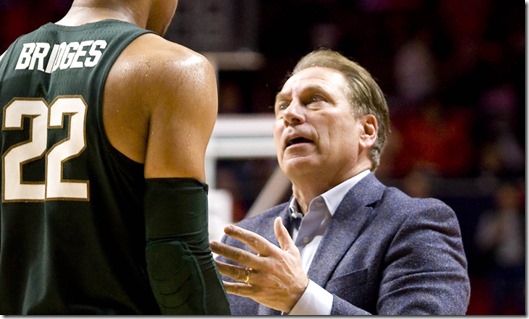

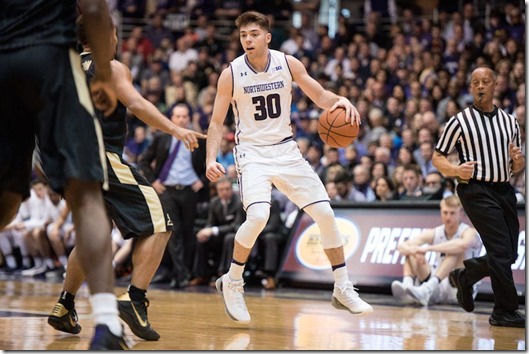
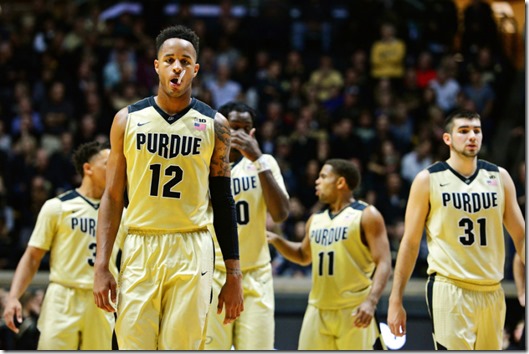
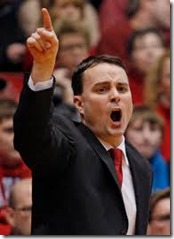
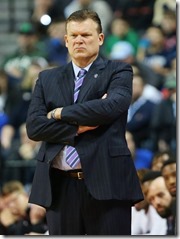
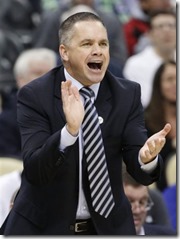
Comments